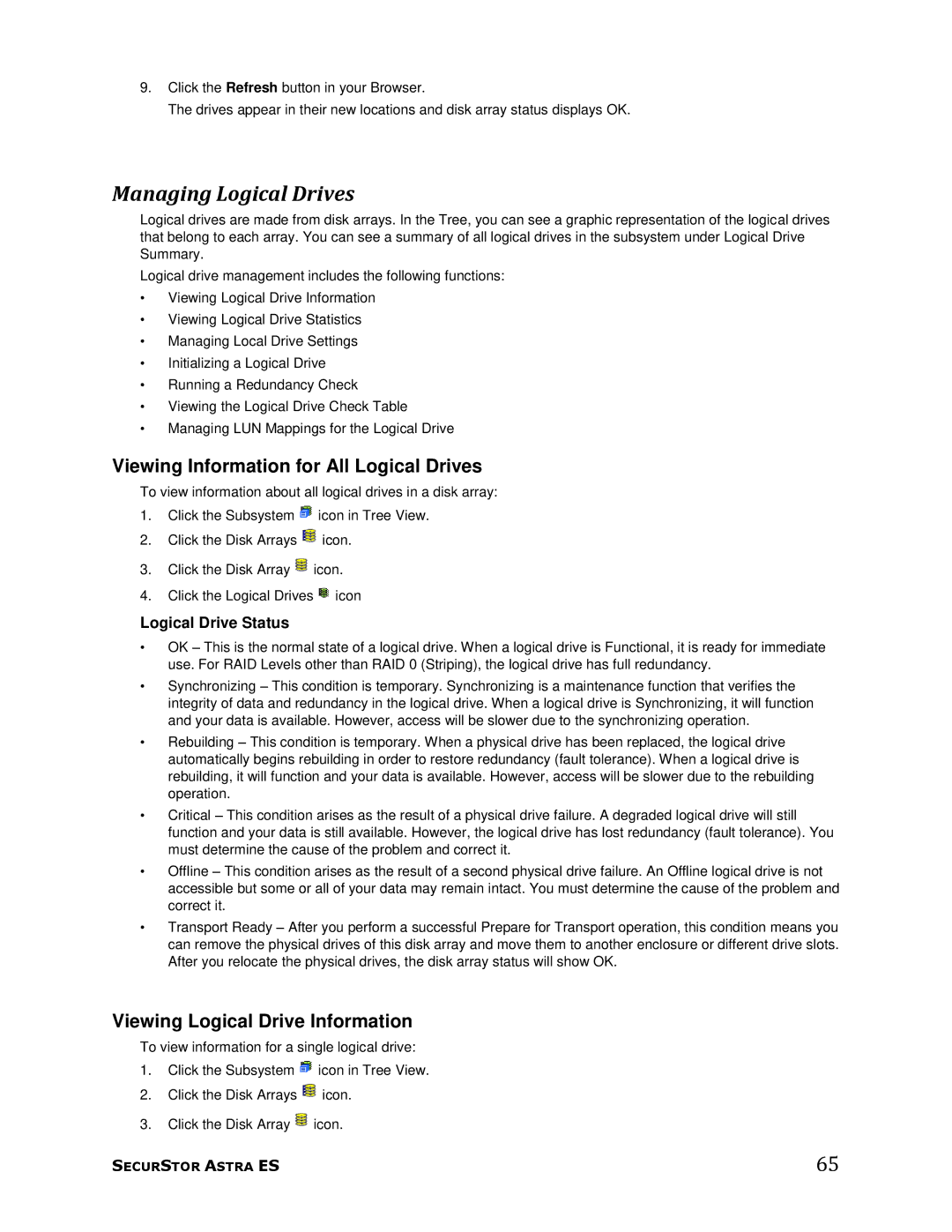9.Click the Refresh button in your Browser.
The drives appear in their new locations and disk array status displays OK.
Managing Logical Drives
Logical drives are made from disk arrays. In the Tree, you can see a graphic representation of the logical drives that belong to each array. You can see a summary of all logical drives in the subsystem under Logical Drive Summary.
Logical drive management includes the following functions:
•Viewing Logical Drive Information
•Viewing Logical Drive Statistics
•Managing Local Drive Settings
•Initializing a Logical Drive
•Running a Redundancy Check
•Viewing the Logical Drive Check Table
•Managing LUN Mappings for the Logical Drive
Viewing Information for All Logical Drives
To view information about all logical drives in a disk array:
1.Click the Subsystem ![]() icon in Tree View.
icon in Tree View.
2.Click the Disk Arrays ![]() icon.
icon.
3.Click the Disk Array ![]() icon.
icon.
4.Click the Logical Drives ![]() icon
icon
Logical Drive Status
•OK – This is the normal state of a logical drive. When a logical drive is Functional, it is ready for immediate use. For RAID Levels other than RAID 0 (Striping), the logical drive has full redundancy.
•Synchronizing – This condition is temporary. Synchronizing is a maintenance function that verifies the integrity of data and redundancy in the logical drive. When a logical drive is Synchronizing, it will function and your data is available. However, access will be slower due to the synchronizing operation.
•Rebuilding – This condition is temporary. When a physical drive has been replaced, the logical drive automatically begins rebuilding in order to restore redundancy (fault tolerance). When a logical drive is rebuilding, it will function and your data is available. However, access will be slower due to the rebuilding operation.
•Critical – This condition arises as the result of a physical drive failure. A degraded logical drive will still function and your data is still available. However, the logical drive has lost redundancy (fault tolerance). You must determine the cause of the problem and correct it.
•Offline – This condition arises as the result of a second physical drive failure. An Offline logical drive is not accessible but some or all of your data may remain intact. You must determine the cause of the problem and correct it.
•Transport Ready – After you perform a successful Prepare for Transport operation, this condition means you can remove the physical drives of this disk array and move them to another enclosure or different drive slots. After you relocate the physical drives, the disk array status will show OK.
Viewing Logical Drive Information
To view information for a single logical drive:
1.Click the Subsystem ![]() icon in Tree View.
icon in Tree View.
2.Click the Disk Arrays ![]() icon.
icon.
3.Click the Disk Array ![]() icon.
icon.
SECURSTOR ASTRA ES | 65 |
